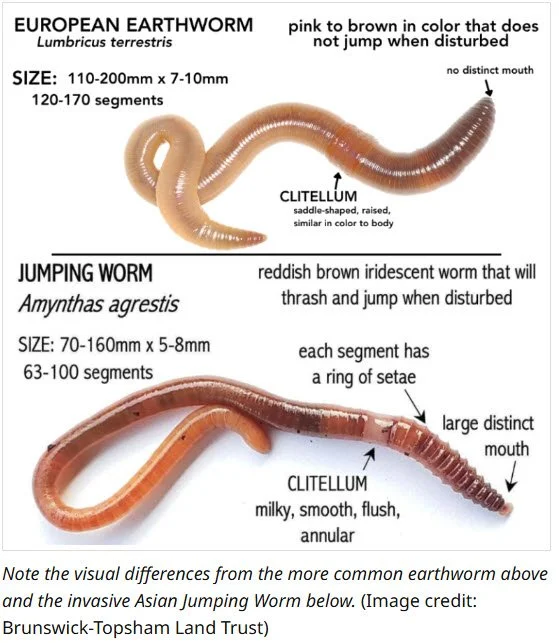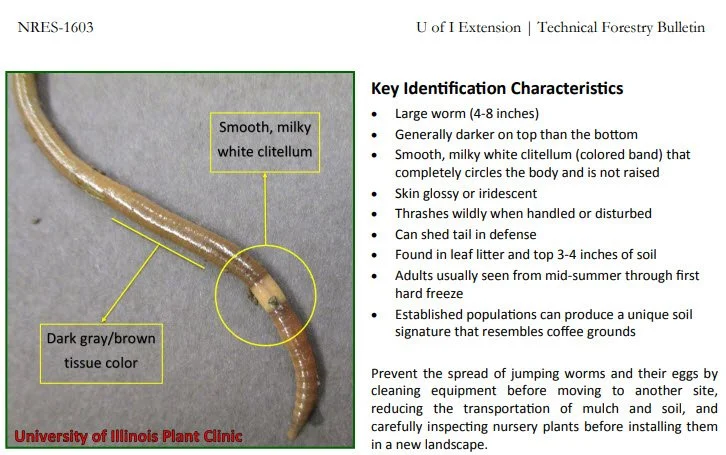According to today’s guest blogger, Dan Baxter, not all earthworms are friends of the garden. This article previously appeared in the Sumter (SC) Master Gardener newsletter, The Sandhill News, and is reprinted with permission. Photo credits are indicated in the captions.
Jumping worms are here. Jumping worms are there. Jumping worms are everywhere. Jumping worms are an invasive type of earthworm native to East Asia and have been spreading throughout the United States, including South Carolina. They are now found in over 38 states. They are also known as Snake Worms, Alabama Jumpers, and Georgia Jumpers. They are called jumping worms because of the aggressive movements when disturbed or picked up. They are often brown in color with a cream saddle that completely encircles them and is flush with the body. They are different from the hammerhead worm which is a flat worm.
The jumping worm consumes organic matter as do regular earth worms, but they do so in a way that depletes the organic matter more quickly. Then through the process, they change the soil structure and nutrient content of the soils for the worse. This has a cascading effect to our plants health and other organisms that live in the soil.
According to the Cornell Cooperative Extension, “jumping worms grow twice as fast, reproduce more quickly and can infest soils at higher densities” than other earthworms.
They destroy the soil layer quickly, turning it into what looks like a cross between hamburger meat and coffee grounds. It has lost its holding ability and the plants are unstable in the ground. There is nothing there for the roots to cling to and thrive.
Adult jumping worms die in the winter but leave behind cocoons of eggs that are so small that they are almost invisible to the naked eye.
Are there any controls for these jumping worms? The options are slim. Removing by hand is one. Dry summers seem to reduce the number, but wet summers increase the number. Solar covering your beds in early spring, which will raise the soil temp has been shown to have some positive effects. One product called BotaniGard has had some good results. BotaniGard is a fungus (it occurs naturally in the soil). It is a granular product that you irrigate in. It has been around for a while but it will also affect other soft bodied pests and organisms.
The outlook is not good. Be diligent by always checking any new plants that you are introducing to your garden.
Happy Gardening!
Dan Baxter, Guest Blogger


